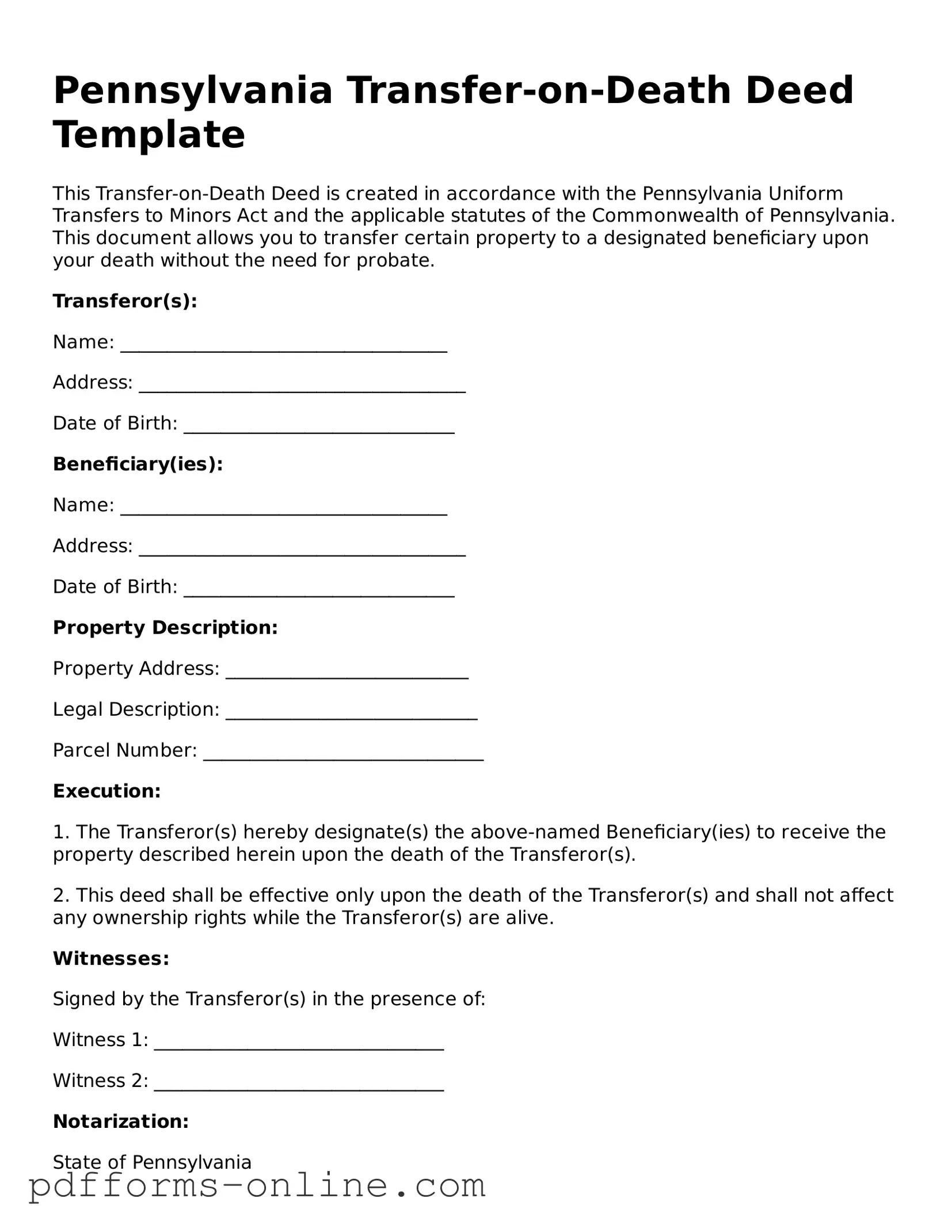Pennsylvania Transfer-on-Death Deed Template
This Transfer-on-Death Deed is created in accordance with the Pennsylvania Uniform Transfers to Minors Act and the applicable statutes of the Commonwealth of Pennsylvania. This document allows you to transfer certain property to a designated beneficiary upon your death without the need for probate.
Transferor(s):
Name: ___________________________________
Address: ___________________________________
Date of Birth: _____________________________
Beneficiary(ies):
Name: ___________________________________
Address: ___________________________________
Date of Birth: _____________________________
Property Description:
Property Address: __________________________
Legal Description: ___________________________
Parcel Number: ______________________________
Execution:
1. The Transferor(s) hereby designate(s) the above-named Beneficiary(ies) to receive the property described herein upon the death of the Transferor(s).
2. This deed shall be effective only upon the death of the Transferor(s) and shall not affect any ownership rights while the Transferor(s) are alive.
Witnesses:
Signed by the Transferor(s) in the presence of:
Witness 1: _______________________________
Witness 2: _______________________________
Notarization:
State of Pennsylvania
County of ______________________________
On this _____ day of _______________, 20____, before me, a notary public, personally appeared ________________, known to me (or satisfactorily proven) to be the person(s) whose name(s) is/are subscribed to the within instrument, and acknowledged that they executed the same for the purposes therein contained.
In witness whereof I hereunto set my hand and official seal.
Notary Public: _________________________
My commission expires: ________________
